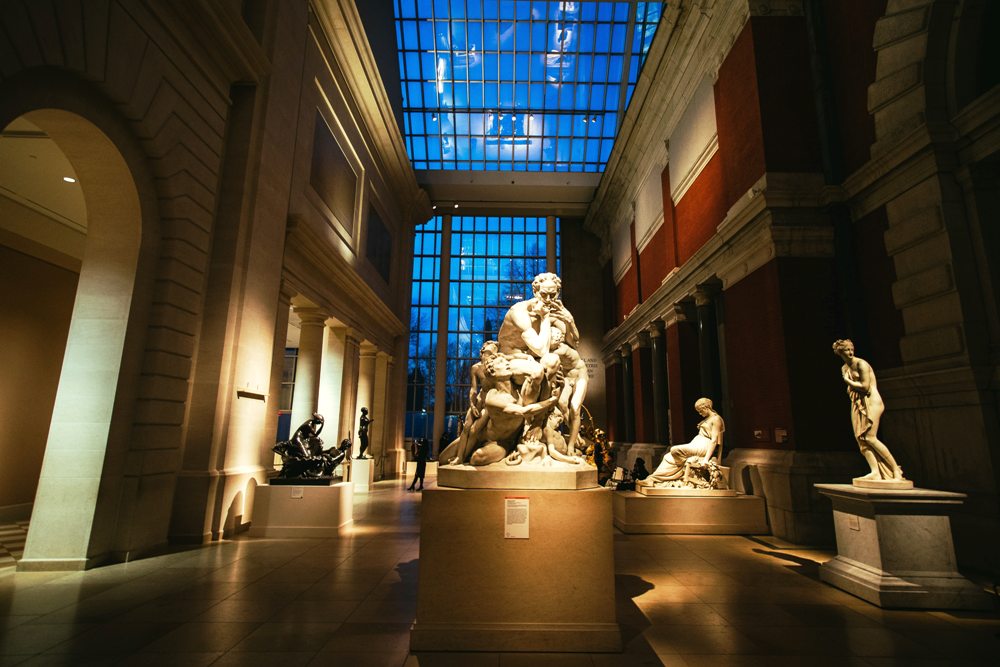
Visiting an art museum can be quite fun; and now, advanced technology is capable of brining the art museum straight to your pocket devices. As many exhibitors conduct virtual art museums in order to reach maximum audiences via an online platform, you can visit art museums virtually from the comfort of your home thereby experiencing an immersive tour with a virtual stage. These tours have become increasingly dynamic in giving visitors a realistic experience with the features and tools provided by virtual art museum platforms such as a 3D effect which adds a more in-person type experience. If you are interested in visiting a virtual art museum, you will likely want to become familiar with some of the features that can assist you in experiencing an enticing tour. Consider these five things which can ease your virtual art museum visit and make it an ideal experience.
Dynamic Environment
A 360° experience can make you feel more like you are on an in-person visit, and the 3D effects of a virtual art museum make the objects and products seem more realistic. A virtual museum will generally have an impressive ambiance with the features such as:
- Information Booths
- Dynamic Lobby
- Multiple Banners
You can find multiple booths at a virtual museum which can be helpful when you need to ask a question or obtain information as you make your way around the museum. Typically, a booth representative is available to help you with the directory guide.
You can experience a 3D dynamic lobby that will give you an experience similar to standing live at the location. Dynamic banners, soothing music, and mesmerizing lights may provide you with a engaging virtual art museum experience.
There are often clickable banners introducing the sponsors and exhibitors. You can reach their booths or website easily by clicking on the link.
Seamless Navigation
When you visit an art museum in real life, you get full navigation via interspersed signboards. Likewise, you can find easy navigation online too, as various buttons and navigators assist you in making your experience more convenient.
- Buttons and Icons
- 360° Navigator
You can see various buttons and icons on your screen that will help you learn about the workshops, auditoriums, and other rooms in the museum. So, you can join what you want by just clicking on it.
A navigation cursor can help you explore the entire museum in a 360° experience as you look around on every wall, floor, roof, and other art pieces with a detailed view.
Multi-Channel Communication Tools
If you have a query regarding an art piece at a physical event, you would simply ask the speaker or docent directly. But in a virtual event, you are afforded various tools in order to communicate with other attendees or experts. Some communication tools may include:
- Live Q&A Sessions
- External Integration
- Live Chat
- Video/Audio Calls
When you have a question about an object or concept related to an art museum, you can raise a query during the live Q&A session. This feature can be helpful to get answers to your questions smoothly from the speaker.
You can even communicate using externally integrated software apps which can further smoothen your communication experience.
You may be presented the option to have one-on-one interaction with other attendees and speakers using the live chat option, a seamless real-time communication source for visitors.
If you want to have a standard conversation as part of the virtual art museum experience, you may be able to do it via audio or video call This helpful 2-way conversion allows participants to convey thoughts clearly with one another.
Immersive Engagement Features
To prevent your attendance at a virtual art museum from becoming particularly bland, enjoy some of the ancillary features that help you engage as you would at an in-person event.
- Content Guide
- AR Photo Booth
- Clap, Hoot and Like Emojis
- Customized Games
- Leaderboard Contest
A content guide, like the directory guides you get at a physical event, can be downloaded to provide documents in compatible formats such as video and .pdf so that you may view content which is available via the event.
For fun selfies and photos, a virtual art museum may offer an AR photo booth to take pictures with different background templates. You can keep the images as a special memento or upload the photos onto your social media channels.
We clap to show appreciation and encourage the speaker while attending an in-person event, and you can also clap, hoot, and like with shared emojis in order to indicate enjoyment of your virtual art museum visit.
Various AR/VR game formats are available in virtual events which you can play in real-time for your engagement and entertainment during the virtual museum visit.
Multiple-player leaderboards also make gamification more fun and add healthy competition among the participants. You may also win rewards as offered by the art museum organizer.
Networking Tools
A number of tools can help you create ties with the exhibitor and and connect with other attendees and various participants.
- AI Matchmaking
- Business Card Exchange
- B2B Meeting Schedulers
- Networking Tables
- Advanced Search Filters
Connecting with the other participants attending the virtual art museum via AI matchmaking can help you find people with similar interests as you.
You can request a business card from any other attendees or exhibitors, and you can accept requests as well.
You can even schedule a meeting with exhibitors and/or conduct a meeting before or after the event itself.
For a life-like experience at a virtual art museum, consider a one-on-one chat or group chat option with audio/video functionality for a more seamless experience.
Use the available advanced search filters in order to quickly and efficiently find the information you are seeking.
The various online features offered by art museum exhibitors can go a long way in helping you successfully experience a virtual art museum event.
MORE ON THE FLASH LIST






























